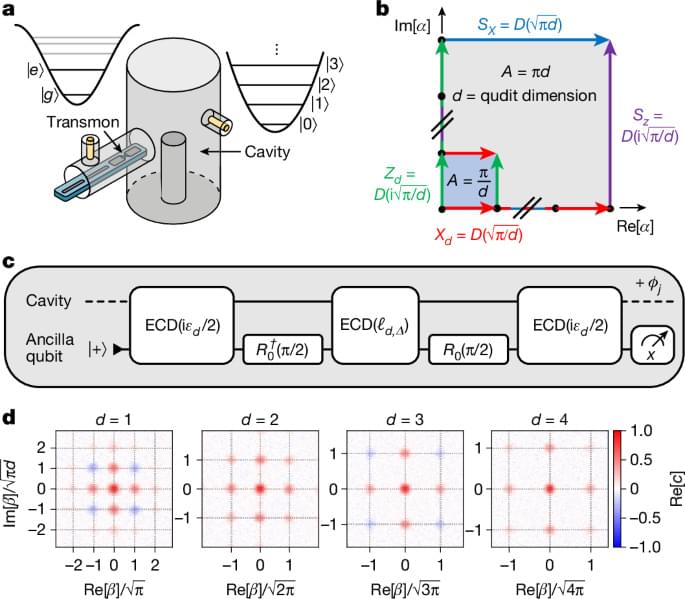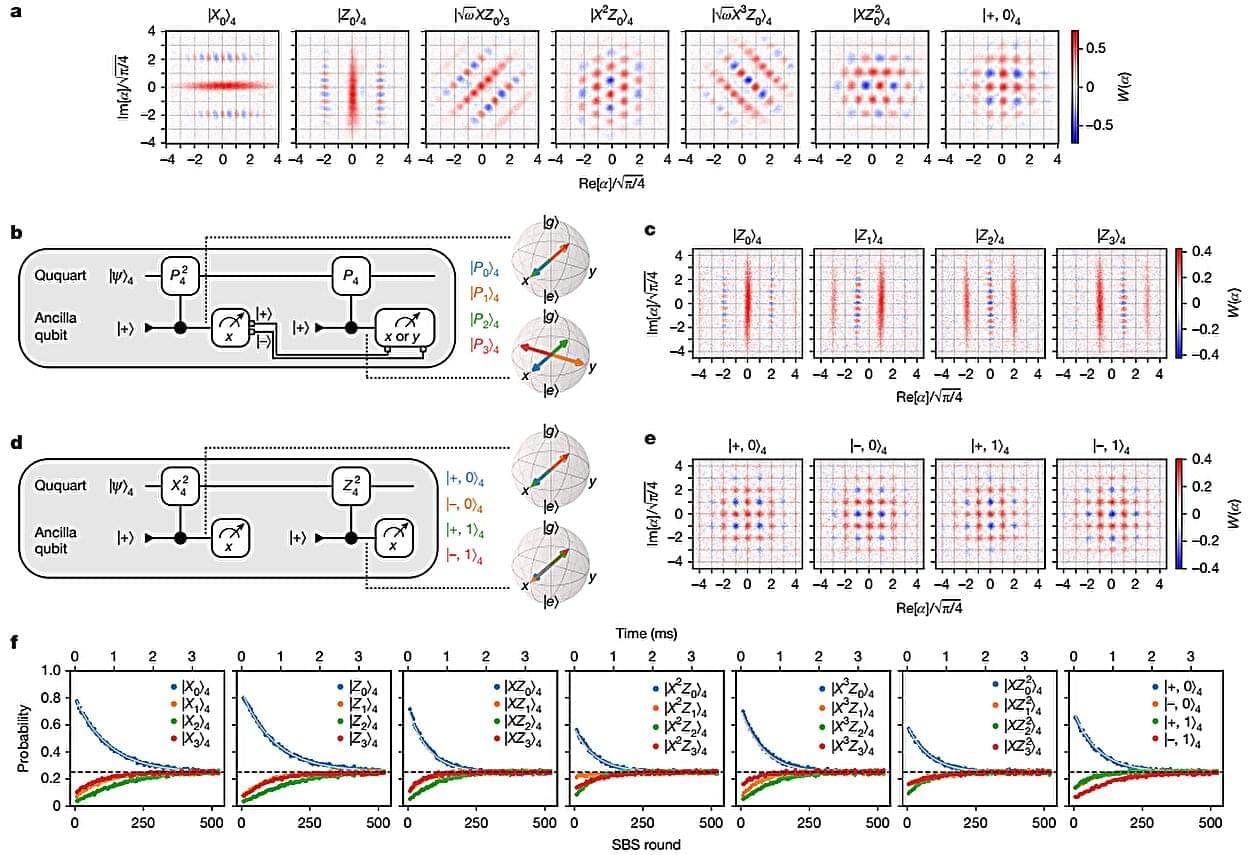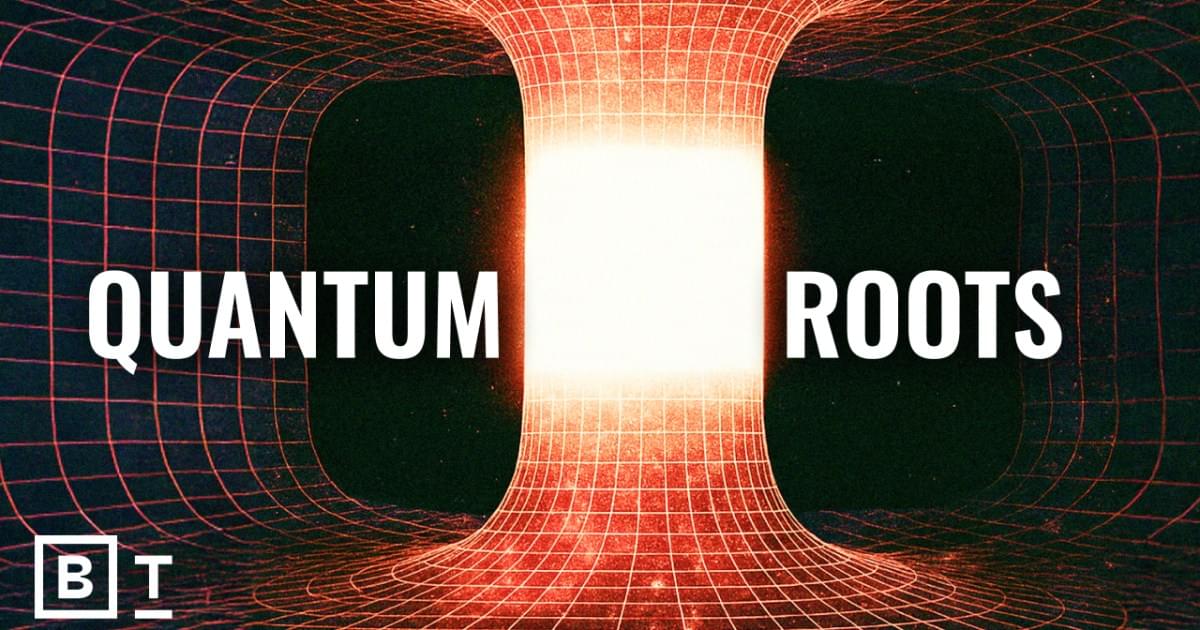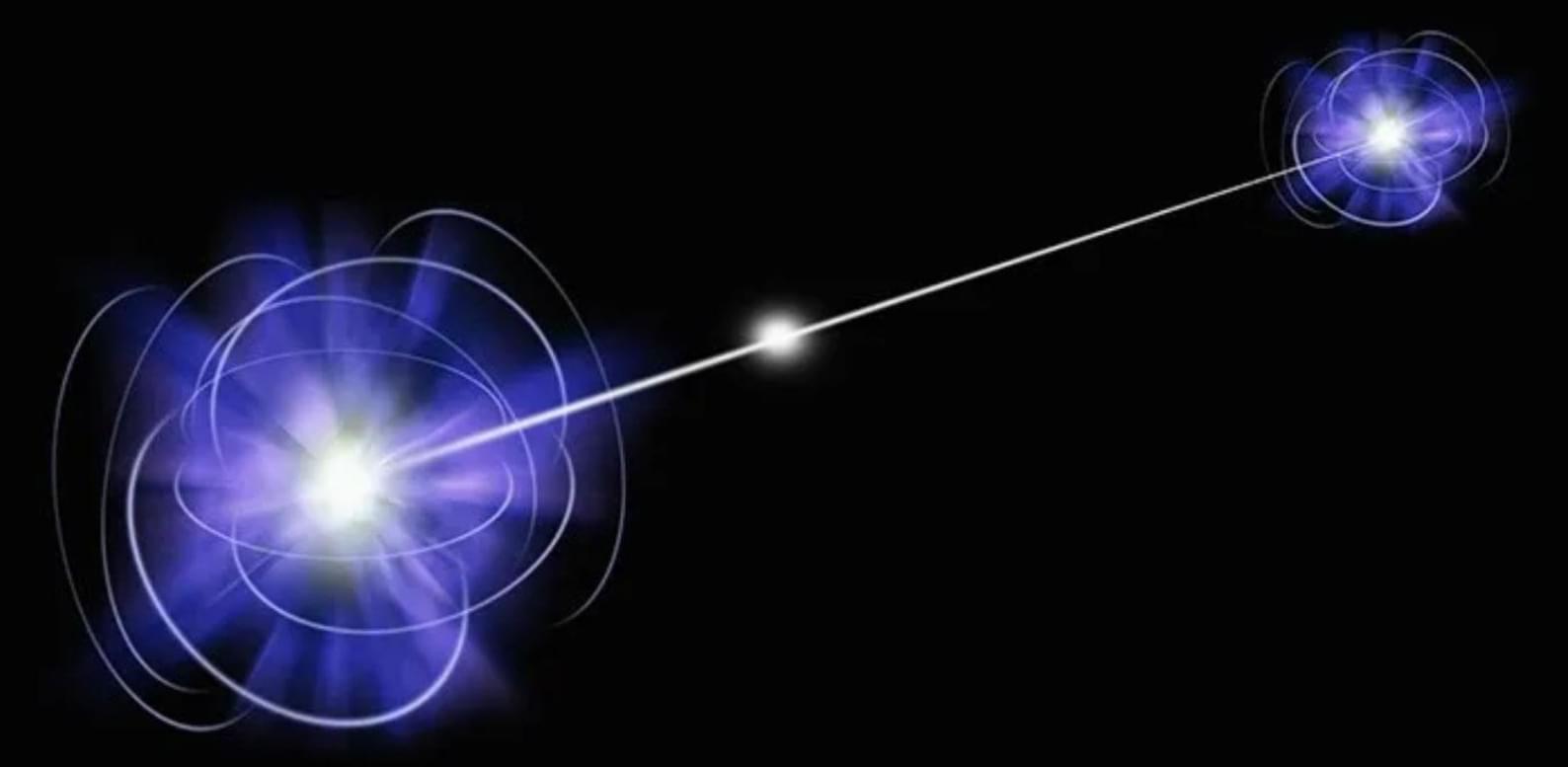Quantum error correction of a logical qutrit and ququart were experimentally realized beyond the break-even point with the Gottesman–Kitaev–Preskill bosonic code.


Did the universe really start with a Big Bang? Dr. Richard Lieu thinks otherwise. In this episode, we explore his radical theory of transient temporal singularities—bursts that could replace dark matter, dark energy, and even the Big Bang itself. Get ready to rethink the universe.
Paper link: https://arxiv.org/pdf/2503.08733.
Chapters:
00:00 Introduction.
00:43 The Big Bang Under Scrutiny.
04:31 Gravity Without Mass?
07:56 Implications, Related Theories, and the Future of Cosmology.
11:07 Outro.
11:26 Enjoy.
MUSIC TITLE: Starlight Harmonies.
MUSIC LINK: https://pixabay.com/music/pulses-star… our website for up-to-the-minute updates: www.nasaspacenews.com Follow us Facebook: / nasaspacenews Twitter:
/ spacenewsnasa Join this channel to get access to these perks:
/ @nasaspacenewsagency #NSN #NASA #Astronomy #BigBangTheory #RichardLieu #NewCosmology #DarkMatter #DarkEnergy #AlternativePhysics #Astrophysics #SpaceTime #CosmicExpansion #NewScience #CosmologyExplained #ScienceNews #SpaceScience #QuantumGravity #AstroTheory #EinsteinChallenge #MasslessGravity #TemporalSingularity #UniverseOrigin #SpaceUpdate #TimeBurstTheory #BigBangDebunked #ScientificBreakthrough #JamesWebbTelescope #VeraRubinObservatory #PhysicsExplained #ModernCosmology #ScientificTheories #GravityExplained #MindBlowingScience.
Visit our website for up-to-the-minute updates:
www.nasaspacenews.com.
Follow us.
Facebook: / nasaspacenews.
Twitter: / spacenewsnasa.
Join this channel to get access to these perks:
/ @nasaspacenewsagency.
CASIMIR EFFECT @SEVENTHQUANTUMACADEMY
This video will tell you the mysterious creator of force carrier particle particularly Graviton and then chronologically gluon, photon and boson. You will see delving into the string theory and quantum physics and dimensional physics that how this force was first created immediately after the first quantum vacuum fluctuation and the creation of Planck’s length and hence the Planck’s world. You will observe with tremendous astonishment that it is telling some other stories regarding birth of invisible universe which is the predecessor of the visible third dimensional universe we can see today. So to delve into this mysterious world, watch the full video with concentration and to get more subscribe SEVENTH QUANTUM ACADEMY and tap the bell icon to get notified when the new video gets published.

In the world of quantum computing, the Hilbert space dimension—the measure of the number of quantum states that a quantum computer can access—is a prized possession. Having a larger Hilbert space allows for more complex quantum operations and plays a crucial role in enabling quantum error correction (QEC), essential for protecting quantum information from noise and errors.
A recent study by researchers from Yale University published in Nature created qudits—a quantum system that holds quantum information and can exist in more than two states. Using a qutrit (3-level quantum system) and a ququart (4-level quantum system), the researchers demonstrated the first-ever experimental quantum error correction for higher-dimensional quantum units using the Gottesman–Kitaev–Preskill (GKP) bosonic code.
Most quantum computers on the market usually process information using quantum states called qubits—fundamental units similar to a bit in a regular computer that can exist in two well-defined states, up and down and also both 0 and 1 at the same time, due to quantum superposition. The Hilbert space of a single qubit is a two-dimensional complex vector space.

Physicists from Oxford have, for the first time, scaled quantum computing using distributed teleportation technology — and this could change everything. From «parallel universes» to Grover’s algorithm, from cryptography to molecular modeling — the world is entering an era where «impossible» problems


IN A NUTSHELL 🌕 Interlune, a Seattle-based startup, plans to extract helium-3 from the moon, aiming to revolutionize clean energy and quantum computing. 🚀 The company has developed a prototype excavator capable of digging up to ten feet into lunar soil, refining helium-3 directly on the moon for efficiency. 🔋 Helium-3 offers potential for nuclear

Researchers at the University of Sydney have successfully performed a quantum simulation of chemical dynamics with real molecules for the first time, marking a significant milestone in the application of quantum computing to chemistry and medicine.
Understanding in real time how atoms interact to form new compounds or interact with light has long been expected as a potential application of quantum technology. Now, quantum chemist Professor Ivan Kassal and Physics Horizon Fellow Dr. Tingrei Tan have shown it is possible using a quantum machine at the University of Sydney.
The innovative work leverages a novel, highly resource-efficient encoding scheme implemented on a trapped-ion quantum computer in the University of Sydney Nanoscience Hub, with implications that could help transform medicine, energy and materials science.

